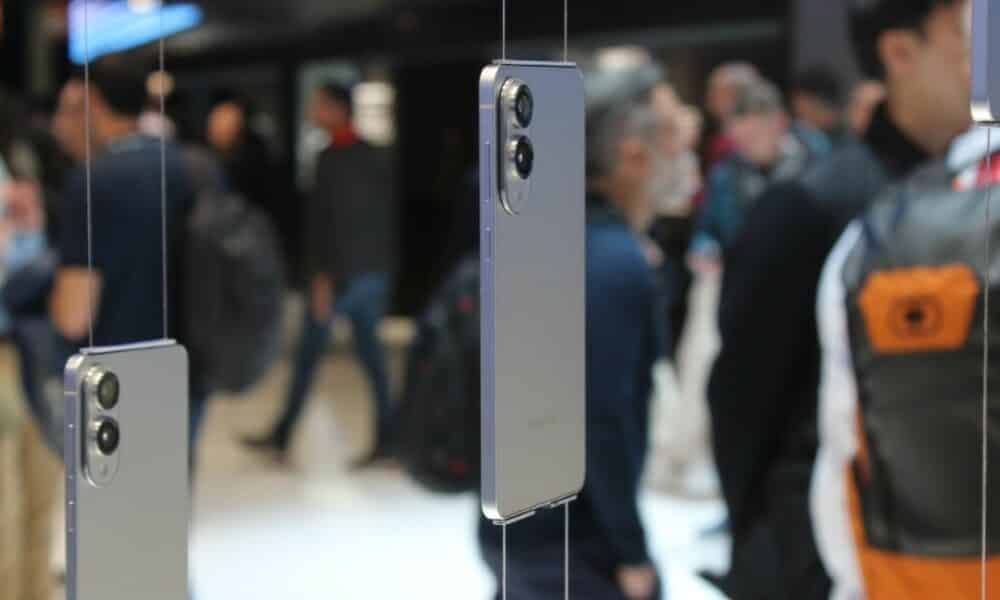Samsung revealed in April 2025 an ambitious expansion of its One UI 7 interface, built on Android 15, to 46 devices in its Galaxy lineup, cementing its dominance in the global smartphone and tablet market. The update, which began rolling out in 2024, spans from the newly launched Galaxy S25 series to mid-range models like the Galaxy A54 and tablets such as the Tab S9, delivering cutting-edge artificial intelligence, a refreshed design, and enhanced security features. With a focus on optimized performance and robust 5G connectivity, the South Korean giant aims to provide a modern experience to millions of users worldwide, including key markets like Brazil. The rollout is phased throughout 2025, ensuring devices across various categories receive innovations that balance accessibility with high-end technology, catering to both tech enthusiasts and budget-conscious consumers.
The update process kicked off in the second half of 2024, prioritizing premium devices like the Galaxy S24, Z Fold 6, and Z Flip 6. Now, in 2025, it extends to a broader range, covering the S, Z, A, M, and Tab series, reaching a diverse user base. Artificial intelligence lies at the core of One UI 7, with assistants that adapt to user habits and offer practical suggestions, such as tweaking settings for battery efficiency or organizing daily tasks. The interface also sports a modernized design with sleek icons and fluid animations, making navigation more intuitive on both smartphones and tablets.
Special attention has been given to 5G connectivity. One UI 7 minimizes latency and stabilizes connections on fifth-generation networks, ensuring reliable performance in urban hubs and expanding regions. Tablets gain improved multitasking capabilities, while foldables leverage flexible displays with greater efficiency. Samsung projects that over 100 million devices will be updated by the end of 2025, reinforcing its strategy to deliver advanced technology to a wide audience.
Initial rollout highlights
The Galaxy S25 series, unveiled in January 2025, shipped with One UI 7 pre-installed. Powered by next-generation processors, these devices fully harness the update’s features, including responsive AI assistants and detailed customization options. Users report seamless performance in daily tasks, from social media browsing to video editing, with smooth transitions elevating the experience.
The Galaxy S24 lineup, including the S24, S24+, and S24 Ultra, began receiving the update in September 2024. These globally popular smartphones now boast tools that extend battery life and enhance image capture. The AI-powered camera app offers real-time adjustments, such as removing unwanted objects and optimizing lighting, delivering near-professional results.
Foldable devices like the Galaxy Z Fold 6 and Z Flip 6 were among the first to benefit. The interface is tailored for flexible screens, supporting up to three apps open simultaneously with simplified navigation. This functionality caters to professionals needing multitasking and enthusiasts enjoying gaming or streaming in unique formats.
Devices receiving One UI 7
The range of updated models reflects Samsung’s commitment to unifying its Galaxy lineup. Below are the first confirmed devices for One UI 7:
- Galaxy S series: S25, S25+, S25 Ultra, S24, S24+, S24 Ultra, S23, S23+, S23 Ultra, S22, S22+, S22 Ultra.
- Galaxy Z series: Z Fold 6, Z Fold 5, Z Fold 4, Z Flip 6, Z Flip 5, Z Flip 4.
- Galaxy Tab series: Tab S9, S9+, S9 Ultra, Tab S8, S8+, S8 Ultra.
- Galaxy A series: A74, A54, A34.
- Galaxy M series: M54, M34.
Um assistente inteligente de verdade está chegando no #GalaxyUnpacked no dia 22 de janeiro de 2025.#GalaxyAI
Saiba mais em https://t.co/HwA7tFXA2H pic.twitter.com/2JvHi5jBj1
— Samsung Brasil (@SamsungBrasil) January 7, 2025
This initial list prioritizes flagships and premium tablets, with mid-range models slated for updates in the coming months. Including older devices like the Galaxy S22 underscores Samsung’s extended support policy.
Artificial intelligence at the forefront
One UI 7 positions artificial intelligence as a game-changer. Built-in assistants analyze user patterns, suggesting shortcuts for frequent tasks like replying to messages or adjusting screen brightness based on ambient light. This personalization reduces manual tinkering, making devices more intuitive.
The battery-saving feature leverages machine learning to optimize power consumption. Tests indicate up to a 15% boost in battery life during heavy use, such as streaming or gaming. On models like the Galaxy S25 Ultra, AI dynamically balances processor performance, ensuring efficiency across various apps.
Photography shines with advanced tools. The native camera app removes background noise in videos, auto-enhances colors, and corrects portrait imperfections. Previously exclusive to paid software, these capabilities are now available on mid-range devices like the Galaxy A54, broadening access to high-quality features.
Fortified security measures
Safeguarding personal data is a cornerstone of One UI 7. The interface introduces granular permission controls, letting users restrict app access to sensitive information like location or contacts. For instance, location sharing can be limited to when an app is in use, minimizing tracking risks.
Samsung Knox, the company’s security platform, has been upgraded with additional protective layers. It monitors suspicious activity in real time, thwarting unauthorized access attempts. Paired with Android 15, the system provides strong defenses against malware, vital for users storing financial or corporate data.
Compatible devices will receive security updates for up to five years, model-dependent. This commitment extends device longevity, particularly in markets where frequent upgrades are less common, fostering user trust in an increasingly complex digital landscape.
Support for older models
While recent devices take priority, Samsung offers partial support for older models. The Galaxy S21 series, launched in 2021, won’t get the full One UI 7 experience but remains eligible for security patches until 2026 in select regions. This approach keeps these devices functional, albeit without cutting-edge features.
Mid-range models like the Galaxy A53 also benefit from extended support. In Brazil, where entry-level and mid-tier devices dominate sales, this ensures performance and security enhancements for a broad user base. Unlocked models typically receive updates ahead of carrier-locked variants.
User feedback shapes Samsung’s support strategy. Online forums in regions like Europe and Asia have pushed for more focus on mid-range devices, prompting the inclusion of models like the Galaxy M34 in the 2025 update roster.

Detailed rollout schedule
One UI 7’s distribution follows a structured timeline to ensure stability:
- September to October 2024: Galaxy S24, S24+, S24 Ultra, Z Fold 6, Z Flip 6.
- January to March 2025: Galaxy S23, S23+, S23 Ultra, S22, S22+, S22 Ultra, Tab S9, Tab S8.
- April to June 2025: Galaxy A74, A54, A34, M54, M34, and other mid-range models.
- July to December 2025: Final tweaks for remaining devices and regional variants.
Users can check availability in software settings, with Samsung advising a stable Wi-Fi connection and at least 50% battery during the process.
Foldable device optimizations
The Galaxy Z Fold 6 and Z Flip 6 receive tailored One UI 7 enhancements. The interface maximizes flexible screens, supporting up to three apps at once with intuitive gestures. This is perfect for users juggling spreadsheets, video calls, and notes on a single device.
Navigation is streamlined with practical screen-splitting options. For entertainment, like watching videos while messaging, the experience is seamless. One UI 7 also reduces power consumption on foldable displays, extending hardware durability.
Z Fold 6 users report improved efficiency in extended tasks like document editing or gaming. These upgrades position foldables as versatile tools for both work and leisure, broadening their market appeal.
Enhanced 5G connectivity
5G connectivity is a pillar of One UI 7. The interface cuts latency on fifth-generation networks, ensuring fast data transfers and stable video calls. In urban areas with robust coverage, Galaxy devices deliver consistent performance, even during peak hours.
In rural regions, where 5G infrastructure is still growing, One UI 7 optimizes transitions between 5G and 4G, preventing disruptions. This flexibility is key in markets like Brazil, where 5G rollout varies by state. Models like the Galaxy A54 show noticeable speed improvements in tests.
Data management tools let users set app-specific limits, cutting costs on capped plans. This feature caters to consumers balancing performance with affordability, especially in emerging markets.
Advantages for Galaxy tablets
The Galaxy Tab S9 and S8 series stand out with One UI 7. The interface enhances tasks like video editing, project management, and streaming, aligning tablet performance with smartphones. Multitasking supports floating windows, ideal for students and professionals.
Accessory compatibility has improved. On the Tab S9, S Pen latency is reduced, offering greater precision for notes and sketches. Battery life also benefits, with up to 20% gains in light tasks like reading or web browsing.
These advancements make tablets viable laptop alternatives for lightweight productivity, appealing to users seeking versatility without high costs.
Seamless Galaxy ecosystem integration
One UI 7 strengthens ties across Galaxy devices. Smartphones, tablets, smartwatches, and earbuds share data efficiently, enabling smooth transitions. For instance, a call started on a Galaxy S25 can shift to a Tab S9 without hiccups.
Native apps like Samsung Notes sync in real time. Users with multiple Galaxy devices report greater workflow ease, particularly in business settings. This mirrors closed ecosystems like Apple’s but with broader price diversity.
Wearable support expands, too. The Galaxy Watch displays detailed One UI 7 notifications, allowing quick replies without touching the phone. This integration boosts the perceived value of Galaxy products, encouraging brand loyalty.
Spotlight on mid-range models
Including devices like the Galaxy A54 and M34 widens One UI 7’s reach. Popular in Brazil, these models gain flagship-level features, such as AI-powered photo editing and smart battery tweaks, democratizing innovation across price points.
The 2023 Galaxy A54 excels in versatility. With One UI 7, it delivers strong performance for browsing and social media, with an optimized camera capturing sharp low-light shots. The Galaxy M34, focused on endurance, pairs One UI 7’s power savings with its robust battery, ideal for extended use.
These advances solidify Samsung’s edge in markets where mid-range devices dominate, offering quality without steep investments.
Core One UI 7 features
One UI 7 introduces transformative user experience elements:
- Modern design: Sleek icons and smooth animations for intuitive navigation.
- Advanced AI: Predictive assistants automate tasks and personalize settings.
- Battery savings: Up to 15% longer life with smart optimizations.
- Enhanced camera: Real-time editing and noise removal for photos and videos.
- Robust security: Upgraded Samsung Knox with real-time monitoring.
These, combined with 5G support, position Galaxy devices as future-ready options.
Samsung’s global strategy
Samsung leads the Android ecosystem with up to four years of system updates and five years of security patches for premium models. This rivals brands like Apple, enhancing Galaxy devices’ long-term value.
Brazil, a key market, will see millions impacted by One UI 7 by late 2025, especially in the A and M series. Samsung tailors updates to meet local privacy and connectivity regulations, ensuring compliance.
Integration with services like Google Gemini adds versatility. Users can leverage voice assistants for complex tasks like summarizing or video editing, reinforcing the Galaxy interface’s identity.
Rollout challenges
Large-scale deployment faces hurdles. Mid-range model updates may lag due to hardware fragmentation, particularly in regions with carrier-customized software. Samsung invests in robust servers to speed things up, but complexities remain.
Owners of older models like the Galaxy S21 seek more support, though Samsung prioritizes newer devices. Still, security patches for 2021 models show commitment to the installed base, balancing innovation with continuity.
One UI 7 aims to cement Samsung’s status as an Android update leader, serving both tech enthusiasts and casual users in a competitive market.
Eye on the future
One UI 7 is more than an incremental update. It preps Galaxy devices for trends like augmented reality and cloud computing, supporting dynamic 120 Hz refresh rates to save battery on compatible screens.
Samsung plans to expand AI in future iterations. Internal tests suggest One UI 8, slated for 2026, will advance local processing, reducing reliance on online connections. This vision underscores ongoing innovation.
With One UI 7, Samsung delivers a practical, secure, and high-performing experience, meeting diverse user needs. The update is a bold step in the Galaxy ecosystem’s evolution, securing its place in a fast-moving market.

Samsung revealed in April 2025 an ambitious expansion of its One UI 7 interface, built on Android 15, to 46 devices in its Galaxy lineup, cementing its dominance in the global smartphone and tablet market. The update, which began rolling out in 2024, spans from the newly launched Galaxy S25 series to mid-range models like the Galaxy A54 and tablets such as the Tab S9, delivering cutting-edge artificial intelligence, a refreshed design, and enhanced security features. With a focus on optimized performance and robust 5G connectivity, the South Korean giant aims to provide a modern experience to millions of users worldwide, including key markets like Brazil. The rollout is phased throughout 2025, ensuring devices across various categories receive innovations that balance accessibility with high-end technology, catering to both tech enthusiasts and budget-conscious consumers.
The update process kicked off in the second half of 2024, prioritizing premium devices like the Galaxy S24, Z Fold 6, and Z Flip 6. Now, in 2025, it extends to a broader range, covering the S, Z, A, M, and Tab series, reaching a diverse user base. Artificial intelligence lies at the core of One UI 7, with assistants that adapt to user habits and offer practical suggestions, such as tweaking settings for battery efficiency or organizing daily tasks. The interface also sports a modernized design with sleek icons and fluid animations, making navigation more intuitive on both smartphones and tablets.
Special attention has been given to 5G connectivity. One UI 7 minimizes latency and stabilizes connections on fifth-generation networks, ensuring reliable performance in urban hubs and expanding regions. Tablets gain improved multitasking capabilities, while foldables leverage flexible displays with greater efficiency. Samsung projects that over 100 million devices will be updated by the end of 2025, reinforcing its strategy to deliver advanced technology to a wide audience.
Initial rollout highlights
The Galaxy S25 series, unveiled in January 2025, shipped with One UI 7 pre-installed. Powered by next-generation processors, these devices fully harness the update’s features, including responsive AI assistants and detailed customization options. Users report seamless performance in daily tasks, from social media browsing to video editing, with smooth transitions elevating the experience.
The Galaxy S24 lineup, including the S24, S24+, and S24 Ultra, began receiving the update in September 2024. These globally popular smartphones now boast tools that extend battery life and enhance image capture. The AI-powered camera app offers real-time adjustments, such as removing unwanted objects and optimizing lighting, delivering near-professional results.
Foldable devices like the Galaxy Z Fold 6 and Z Flip 6 were among the first to benefit. The interface is tailored for flexible screens, supporting up to three apps open simultaneously with simplified navigation. This functionality caters to professionals needing multitasking and enthusiasts enjoying gaming or streaming in unique formats.
Devices receiving One UI 7
The range of updated models reflects Samsung’s commitment to unifying its Galaxy lineup. Below are the first confirmed devices for One UI 7:
- Galaxy S series: S25, S25+, S25 Ultra, S24, S24+, S24 Ultra, S23, S23+, S23 Ultra, S22, S22+, S22 Ultra.
- Galaxy Z series: Z Fold 6, Z Fold 5, Z Fold 4, Z Flip 6, Z Flip 5, Z Flip 4.
- Galaxy Tab series: Tab S9, S9+, S9 Ultra, Tab S8, S8+, S8 Ultra.
- Galaxy A series: A74, A54, A34.
- Galaxy M series: M54, M34.
Um assistente inteligente de verdade está chegando no #GalaxyUnpacked no dia 22 de janeiro de 2025.#GalaxyAI
Saiba mais em https://t.co/HwA7tFXA2H pic.twitter.com/2JvHi5jBj1
— Samsung Brasil (@SamsungBrasil) January 7, 2025
This initial list prioritizes flagships and premium tablets, with mid-range models slated for updates in the coming months. Including older devices like the Galaxy S22 underscores Samsung’s extended support policy.
Artificial intelligence at the forefront
One UI 7 positions artificial intelligence as a game-changer. Built-in assistants analyze user patterns, suggesting shortcuts for frequent tasks like replying to messages or adjusting screen brightness based on ambient light. This personalization reduces manual tinkering, making devices more intuitive.
The battery-saving feature leverages machine learning to optimize power consumption. Tests indicate up to a 15% boost in battery life during heavy use, such as streaming or gaming. On models like the Galaxy S25 Ultra, AI dynamically balances processor performance, ensuring efficiency across various apps.
Photography shines with advanced tools. The native camera app removes background noise in videos, auto-enhances colors, and corrects portrait imperfections. Previously exclusive to paid software, these capabilities are now available on mid-range devices like the Galaxy A54, broadening access to high-quality features.
Fortified security measures
Safeguarding personal data is a cornerstone of One UI 7. The interface introduces granular permission controls, letting users restrict app access to sensitive information like location or contacts. For instance, location sharing can be limited to when an app is in use, minimizing tracking risks.
Samsung Knox, the company’s security platform, has been upgraded with additional protective layers. It monitors suspicious activity in real time, thwarting unauthorized access attempts. Paired with Android 15, the system provides strong defenses against malware, vital for users storing financial or corporate data.
Compatible devices will receive security updates for up to five years, model-dependent. This commitment extends device longevity, particularly in markets where frequent upgrades are less common, fostering user trust in an increasingly complex digital landscape.
Support for older models
While recent devices take priority, Samsung offers partial support for older models. The Galaxy S21 series, launched in 2021, won’t get the full One UI 7 experience but remains eligible for security patches until 2026 in select regions. This approach keeps these devices functional, albeit without cutting-edge features.
Mid-range models like the Galaxy A53 also benefit from extended support. In Brazil, where entry-level and mid-tier devices dominate sales, this ensures performance and security enhancements for a broad user base. Unlocked models typically receive updates ahead of carrier-locked variants.
User feedback shapes Samsung’s support strategy. Online forums in regions like Europe and Asia have pushed for more focus on mid-range devices, prompting the inclusion of models like the Galaxy M34 in the 2025 update roster.

Detailed rollout schedule
One UI 7’s distribution follows a structured timeline to ensure stability:
- September to October 2024: Galaxy S24, S24+, S24 Ultra, Z Fold 6, Z Flip 6.
- January to March 2025: Galaxy S23, S23+, S23 Ultra, S22, S22+, S22 Ultra, Tab S9, Tab S8.
- April to June 2025: Galaxy A74, A54, A34, M54, M34, and other mid-range models.
- July to December 2025: Final tweaks for remaining devices and regional variants.
Users can check availability in software settings, with Samsung advising a stable Wi-Fi connection and at least 50% battery during the process.
Foldable device optimizations
The Galaxy Z Fold 6 and Z Flip 6 receive tailored One UI 7 enhancements. The interface maximizes flexible screens, supporting up to three apps at once with intuitive gestures. This is perfect for users juggling spreadsheets, video calls, and notes on a single device.
Navigation is streamlined with practical screen-splitting options. For entertainment, like watching videos while messaging, the experience is seamless. One UI 7 also reduces power consumption on foldable displays, extending hardware durability.
Z Fold 6 users report improved efficiency in extended tasks like document editing or gaming. These upgrades position foldables as versatile tools for both work and leisure, broadening their market appeal.
Enhanced 5G connectivity
5G connectivity is a pillar of One UI 7. The interface cuts latency on fifth-generation networks, ensuring fast data transfers and stable video calls. In urban areas with robust coverage, Galaxy devices deliver consistent performance, even during peak hours.
In rural regions, where 5G infrastructure is still growing, One UI 7 optimizes transitions between 5G and 4G, preventing disruptions. This flexibility is key in markets like Brazil, where 5G rollout varies by state. Models like the Galaxy A54 show noticeable speed improvements in tests.
Data management tools let users set app-specific limits, cutting costs on capped plans. This feature caters to consumers balancing performance with affordability, especially in emerging markets.
Advantages for Galaxy tablets
The Galaxy Tab S9 and S8 series stand out with One UI 7. The interface enhances tasks like video editing, project management, and streaming, aligning tablet performance with smartphones. Multitasking supports floating windows, ideal for students and professionals.
Accessory compatibility has improved. On the Tab S9, S Pen latency is reduced, offering greater precision for notes and sketches. Battery life also benefits, with up to 20% gains in light tasks like reading or web browsing.
These advancements make tablets viable laptop alternatives for lightweight productivity, appealing to users seeking versatility without high costs.
Seamless Galaxy ecosystem integration
One UI 7 strengthens ties across Galaxy devices. Smartphones, tablets, smartwatches, and earbuds share data efficiently, enabling smooth transitions. For instance, a call started on a Galaxy S25 can shift to a Tab S9 without hiccups.
Native apps like Samsung Notes sync in real time. Users with multiple Galaxy devices report greater workflow ease, particularly in business settings. This mirrors closed ecosystems like Apple’s but with broader price diversity.
Wearable support expands, too. The Galaxy Watch displays detailed One UI 7 notifications, allowing quick replies without touching the phone. This integration boosts the perceived value of Galaxy products, encouraging brand loyalty.
Spotlight on mid-range models
Including devices like the Galaxy A54 and M34 widens One UI 7’s reach. Popular in Brazil, these models gain flagship-level features, such as AI-powered photo editing and smart battery tweaks, democratizing innovation across price points.
The 2023 Galaxy A54 excels in versatility. With One UI 7, it delivers strong performance for browsing and social media, with an optimized camera capturing sharp low-light shots. The Galaxy M34, focused on endurance, pairs One UI 7’s power savings with its robust battery, ideal for extended use.
These advances solidify Samsung’s edge in markets where mid-range devices dominate, offering quality without steep investments.
Core One UI 7 features
One UI 7 introduces transformative user experience elements:
- Modern design: Sleek icons and smooth animations for intuitive navigation.
- Advanced AI: Predictive assistants automate tasks and personalize settings.
- Battery savings: Up to 15% longer life with smart optimizations.
- Enhanced camera: Real-time editing and noise removal for photos and videos.
- Robust security: Upgraded Samsung Knox with real-time monitoring.
These, combined with 5G support, position Galaxy devices as future-ready options.
Samsung’s global strategy
Samsung leads the Android ecosystem with up to four years of system updates and five years of security patches for premium models. This rivals brands like Apple, enhancing Galaxy devices’ long-term value.
Brazil, a key market, will see millions impacted by One UI 7 by late 2025, especially in the A and M series. Samsung tailors updates to meet local privacy and connectivity regulations, ensuring compliance.
Integration with services like Google Gemini adds versatility. Users can leverage voice assistants for complex tasks like summarizing or video editing, reinforcing the Galaxy interface’s identity.
Rollout challenges
Large-scale deployment faces hurdles. Mid-range model updates may lag due to hardware fragmentation, particularly in regions with carrier-customized software. Samsung invests in robust servers to speed things up, but complexities remain.
Owners of older models like the Galaxy S21 seek more support, though Samsung prioritizes newer devices. Still, security patches for 2021 models show commitment to the installed base, balancing innovation with continuity.
One UI 7 aims to cement Samsung’s status as an Android update leader, serving both tech enthusiasts and casual users in a competitive market.
Eye on the future
One UI 7 is more than an incremental update. It preps Galaxy devices for trends like augmented reality and cloud computing, supporting dynamic 120 Hz refresh rates to save battery on compatible screens.
Samsung plans to expand AI in future iterations. Internal tests suggest One UI 8, slated for 2026, will advance local processing, reducing reliance on online connections. This vision underscores ongoing innovation.
With One UI 7, Samsung delivers a practical, secure, and high-performing experience, meeting diverse user needs. The update is a bold step in the Galaxy ecosystem’s evolution, securing its place in a fast-moving market.







